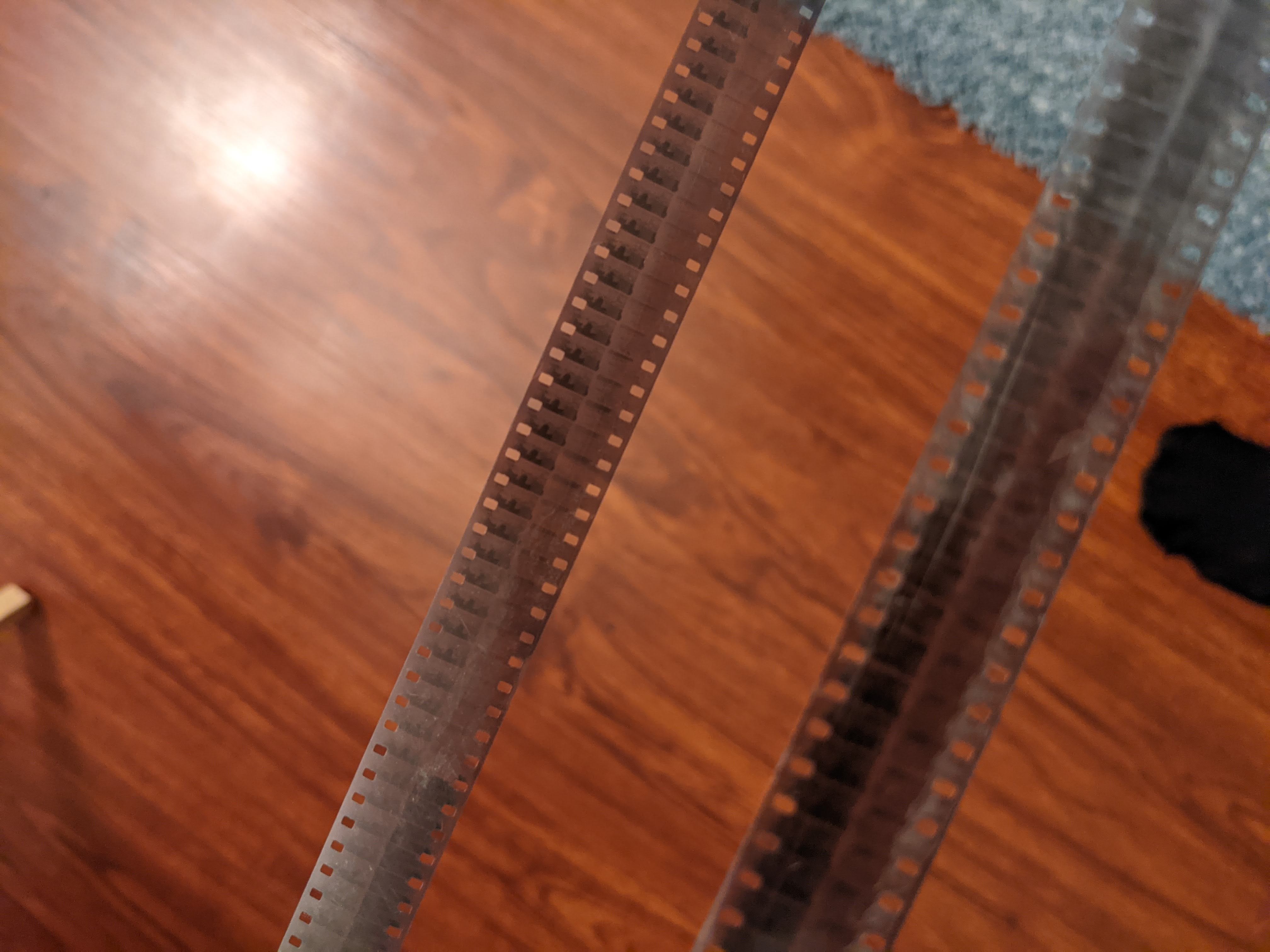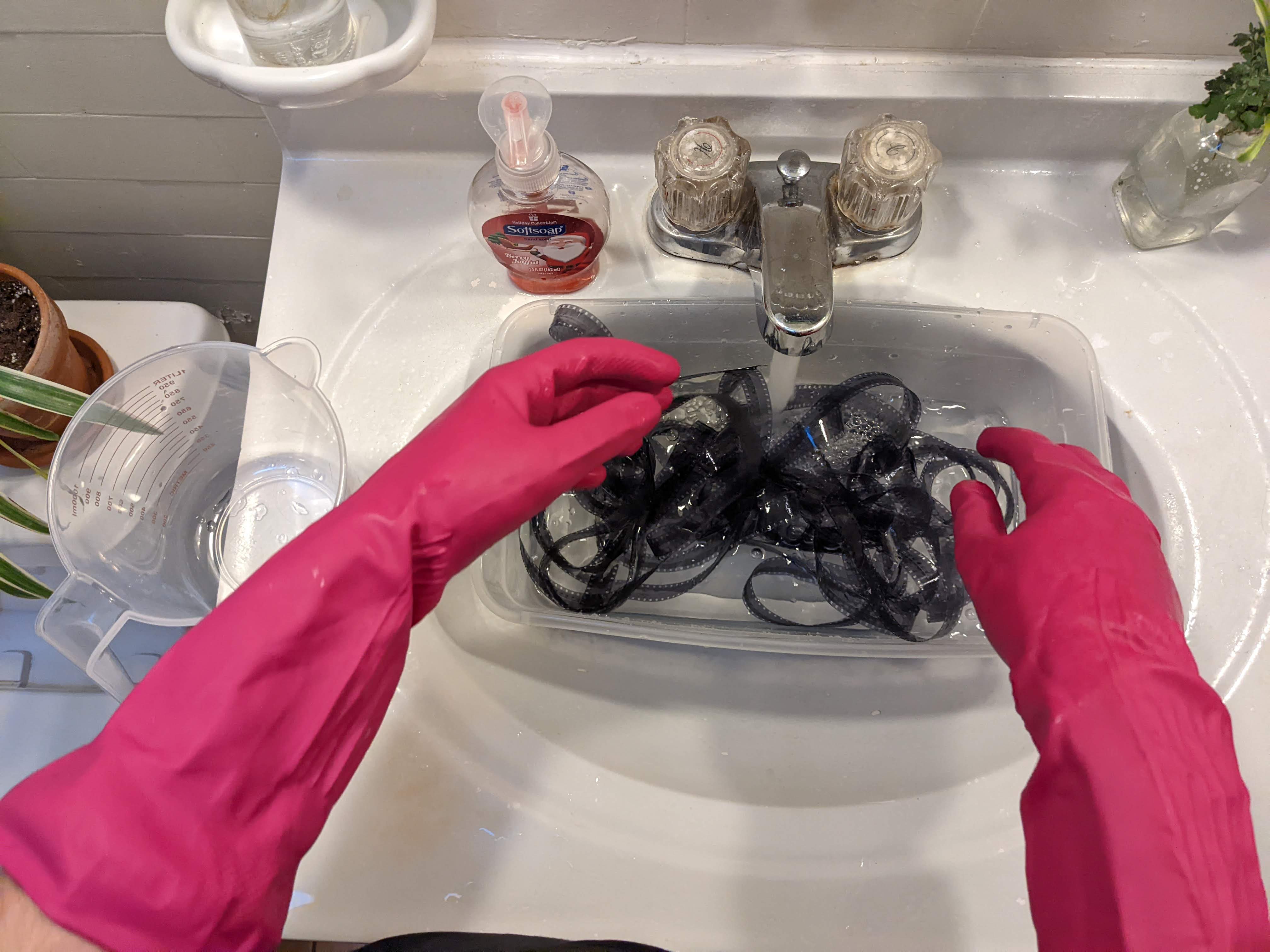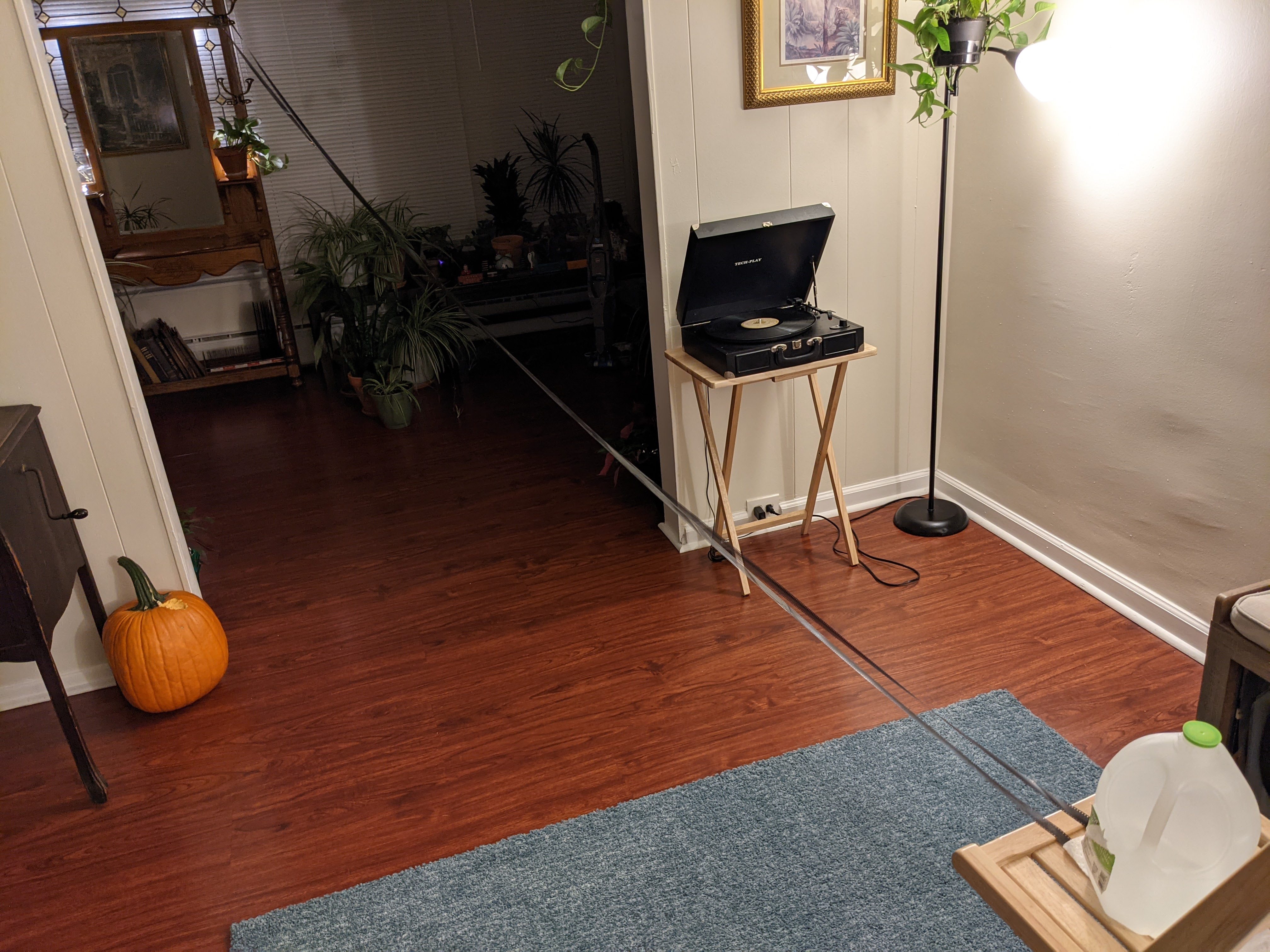8mm Movie Film
The Process
For Andrew, shooting and developing 8mm film allows him to express his creativity and connect with the past through visual, touch, and the mental process. The process of working with older cameras and film, and developing the film himself, speaks to his authentic attention to detail and dedication to preserving history through art.
Surprisingly, double 8mm (also known as standard 8mm) film is still being made by the Film Photography Project. Andrew operates a 1955 Kodak Brownie that was passed on from his grandparents, and a 1939 Bell & Howell 134.
 Left, shows a pair of already developed double 8mm film before being cut down the middle. Each frame is smaller than your pinky nail.Once the film is
run through the camera in one direction, it must be removed from the camera and
fed in upside down and backwards to expose the second half of the film.
Left, shows a pair of already developed double 8mm film before being cut down the middle. Each frame is smaller than your pinky nail.Once the film is
run through the camera in one direction, it must be removed from the camera and
fed in upside down and backwards to expose the second half of the film.
 To develop the film, Andrew uses the "bucket method" where the film is placed in a bucket with the developing reagents and mixed by a gloved hand. This results in the imperfect and aged quality of having
scratches and minor deformities -- something he tries to capture as part of the film process.
To develop the film, Andrew uses the "bucket method" where the film is placed in a bucket with the developing reagents and mixed by a gloved hand. This results in the imperfect and aged quality of having
scratches and minor deformities -- something he tries to capture as part of the film process.
The film is then stretched out to dry overnight, as seen in the first picture below.

